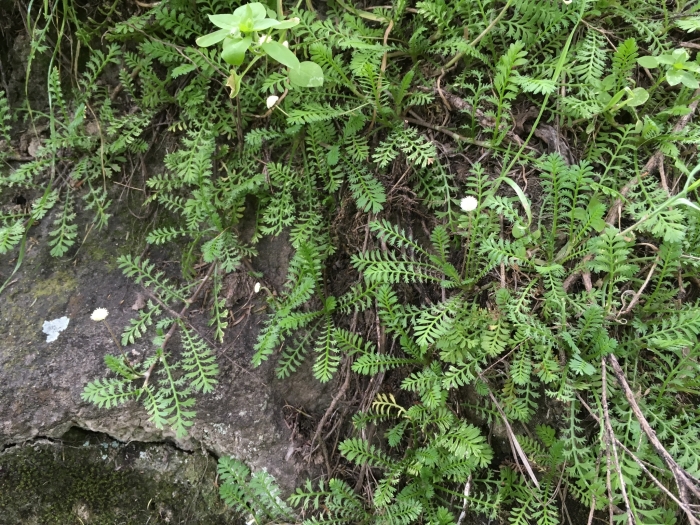Banks Peninsula Button Daisy
(Leptinella minor)
Banks Peninsula Button Daisy (Leptinella minor)
/
/

Jon Sullivan
CC BY 4.0
Image By:
Jon Sullivan
Recorded By:
Copyright:
CC BY 4.0
Copyright Notice:
Photo by: Jon Sullivan | License Type: CC BY 4.0 | License URL: http://creativecommons.org/licenses/by/4.0/ | Rights Holder: Jon Sullivan | Publisher: iNaturalist | Date Created: 2016-10-23T11:41:40-07:00 |












Estimated Native Range
Summary
Leptinella minor, commonly known as Banks Peninsula Button Daisy, is an evergreen perennial herb native to a variety of habitats in New Zealand, including coastal areas, grasslands, and alpine regions. It is a low-growing ground cover that typically reaches only 2-3 inches (5-7.5 cm) in height and can spread up to 20 inches (50 cm) wide. The plant forms a dense mat of feathery, fern-like foliage, and during spring and summer, it produces small, button-like, yellow-green flowers that are not particularly showy but add a subtle charm to the plant’s overall appearance.
Leptinella minor is valued for its ability to form a dense carpet of foliage, which makes it an excellent choice for ground cover, filling gaps between stepping stones, or as part of a green roof planting. It is also used in fairy gardens due to its miniature scale and texture. This plant is relatively easy to maintain, requiring only occasional watering once established, and it can tolerate a range of soil types, provided they have good drainage. It is best grown in full sun to part shade. While generally free from serious pests and diseases, it can sometimes be affected by root rot if overwatered or planted in poorly drained soils. Leptinella minor is not known for being invasive, but it can spread readily in suitable conditions.CC BY-SA 4.0
Leptinella minor is valued for its ability to form a dense carpet of foliage, which makes it an excellent choice for ground cover, filling gaps between stepping stones, or as part of a green roof planting. It is also used in fairy gardens due to its miniature scale and texture. This plant is relatively easy to maintain, requiring only occasional watering once established, and it can tolerate a range of soil types, provided they have good drainage. It is best grown in full sun to part shade. While generally free from serious pests and diseases, it can sometimes be affected by root rot if overwatered or planted in poorly drained soils. Leptinella minor is not known for being invasive, but it can spread readily in suitable conditions.CC BY-SA 4.0
Plant Description
- Plant Type: Herb
- Height: 0.2-0.4 feet
- Width: 0.5-1 feet
- Growth Rate: Moderate
- Flower Color: N/A
- Flowering Season: Spring, Summer
- Leaf Retention: Evergreen
Growth Requirements
- Sun: Full Sun, Part Shade
- Water: Medium
- Drainage: Fast, Medium
Common Uses
Groundcover, Low Maintenance
Natural Habitat
Native to a variety of habitats in New Zealand, including coastal areas, grasslands, and alpine regions
Other Names
Common Names: Alpine Brass Buttons , Brass Buttons
Scientific Names: Leptinella minor , Cotula minor , Cotula haastii
GBIF Accepted Name: Leptinella minor Hook.fil.